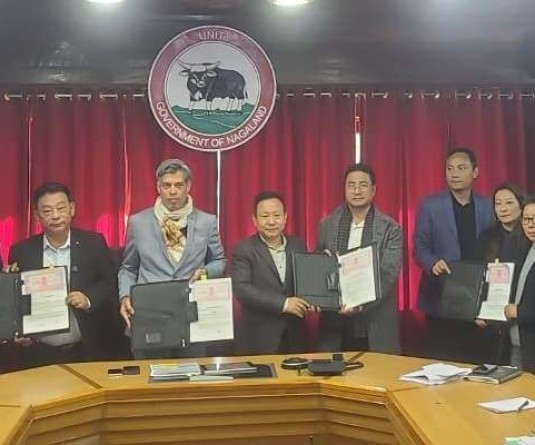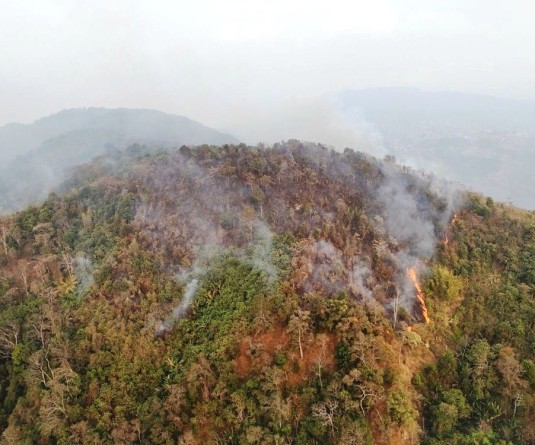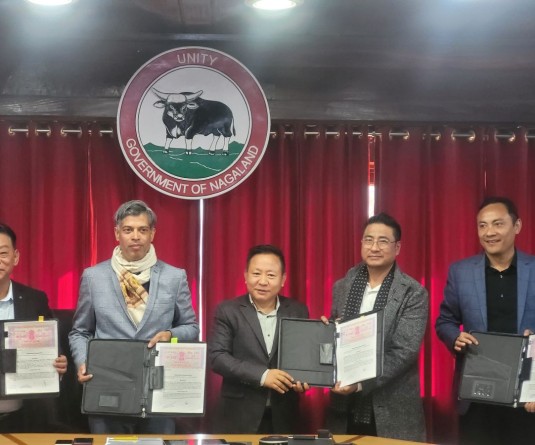Power house at Thuvopisu Microhydel Project funded by the Department of Science & Technology, Government of India. This project inaugurated on May 10, 2007 is 2x50 KW with a head of 100m and located in a remote hill of Thuvopisu Village, Phek District at an altitude of 1900 MSL. (DIPR Photo)
.jpg)
Thuvopisu Microhydel Project a success story of power generation in remote hilly area
Temjenkaba
DIPR | March 19
The bulk of power requirement of the state is purchased from the national grid and even with the local power generation, the power availability falls far short of the requirement, coupled with problems of maintenance of transmission network. Power shortage is a major bottleneck for the economic development of the State. To intervene into this crisis with science & technology inputs the council with the support of DST, GOI has introduced low cost Microhydel Projects in Nagaland.
This is done with the aim to provide electricity to villages for domestic use and small cottage industries. Small hydro projects are generally known to be very expensive and not economically viable. With this in mind, a low cost technology called Cross Flow Turbine de-indigenously developed by Prof. S. Soundranayagam of IISc Bangalore, was introduced. This technology development was supported by the Department of Science and Technology, Government of India. NASTEC is further improving the design of the turbine to meet local specific requirements.
The following microhydel projects are funded by DST, Government of India.
The Thuvopisu Microhydel Project funded by the Department of Science & Technology, Government of India, was inaugurated by the then Governor of Nagaland, K. Shakaranayaranan, on May 10, 2007, in presence of Ministers, MLAs and Chief Secretary of Nagaland, and Dr. Laxman Prasad, Advisor, Department of Science & Technology, Government of India. Emeritus Prof. S. Soundranayagam from Indian Institute of Science, Bangalore, who had designed the Cross-Flow Turbine used in this project, was also present. During the inaugural function, the Project was formally handed over to the Chairman of Thuvopisu Village Council by Dr. Laxman Prasad. The project capacity is 2x50 KW with a head of 100m and located in a remote hill of Thuvopisu Village, Phek District at an altitude of 1900 MSL.
This project was implemented by the Nagaland Science & Technology Council (NASTEC) and on completion it was handed over to the Village Council of Thuvopisu village as initially agreed upon. The village community had also contributed 10% towards the project cost. The project was actually completed during September, 2006, after which trial runs and trainings were imparted till the inauguration in May, 2007. It presently provides electricity to the nearby Thuvopisu village catering to about 350 houses and a population of about 3,000 people.
The project is being managed by the Village Electricity Management Committee, constituted by the Village Council, which is recognized by the Government of Nagaland under Nagaland Communitisation Act 2006. This Committee has appointed two local youths, namely Veyoto Dozo and Kuzuveto Venyo, to maintain the Microhydel project.
These two youths were trained by NASTEC during the course of project implementation for complete project running and maintenance. These include Weir, power channel and fore bay tank maintenance, Turbine operation, skills of welding for penstock, etc. repairs, Turbine bearing lubrication and maintenance, electrical transmission line repairs and maintenance, etc. NASTEC periodically visits the project and keeps in touch with the management committee. So far, the following repairs were done by the two trained persons.
The local management committee for the project charges Rs 40 per light point ITV from the consumers and generate about Rs 20,000 (minus BPL concessions) monthly from which they are able to meet the salaries and other maintenance costs. They have also made it compulsory that only CFL bulbs and tubes would be used in place of incandescent bulbs, in order to reduce energy consumption during the lean season.
It is worth mentioning that during 2010, the whole of Chozuba Sub-division was cut off from grid electricity for months at a stretch. During this period, dwellers of Chozuba town and nearby villagers would walk or drive to this village to charge their mobiles.
The village remained lighted brightly to the envy of their neighbouring villages and towns. The Thuvopisu Microhydel Project is a very good example, where stand alone power generation is being done in a remote hilly area and the project is being managed completely by the Village Community. This was possible by the right choice of technology, implementation method, training and participation of local community. The Village community and NASTEC expressed gratitude to the Department of Science & Technology, Government of India, for implementing the Micro hydel project where the villagers are being benefited immensely.






